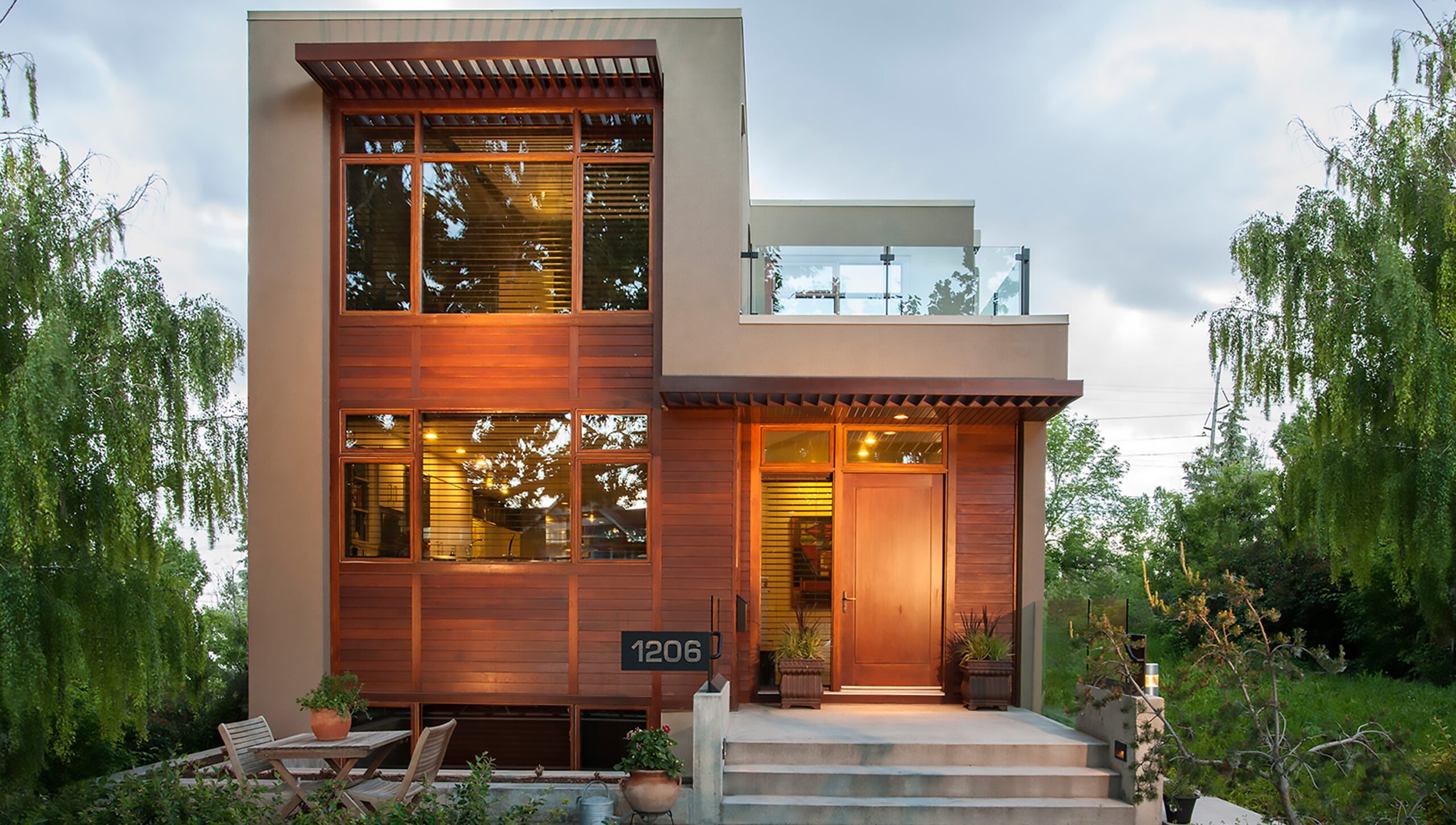
The house is designed for two ’empty-nesters’ who are nevertheless very involved in the raising of their extended family and are avid community volunteers. The site is bound by the Bow River to the north and a pedestrian-centered street to the south, providing two important places of connection for the house.
From a conceptual point of departure, the design is a simple and efficient volume that is scaled to fit within the neighborhood streetscape. This first formal gesture is then tuned to the opportunities of the site, climate, and the aspirations of the couple in embracing life in their community. The first two tuned elements are large expanses of glass at either end of the infill that connect the house’s interior to the larger community and landscape. On the south, the social kitchen and generous porch space connects to the street in a neighborly gesture, while a major formal subtraction at the second level creates outdoor space for the office/studio and a sunny spot to view the community’s activities. Below, the lower level social space enjoys sun and views to a garden through the design of large windows and a landscape cut in the grade. At the north, a deck extends the living room space to the outside, providing seamless socializing opportunities and views to the river landscape, while at the second level, another formal erosion of the main house volume offers a large balcony off of the master bedroom that extends views to the river beyond and provides an exterior amenity space for reading and reflecting.
In uniting the two ends of the house, the main floor is experienced as an integrated and open space, lending the house a generosity of experience, light qualities and functional opportunities. Within this overall social space that connects the activities of entry, cooking, dining, and living, subtle spatial inflections distinguish each space as its own place. Stairs and a gentle plan shift define the living space as intimately connected to the outdoors and the fireplace, while the large entry and kitchen share cabinetry, storage surfaces, and a material palette that celebrates arrival and an ease and efficiency of living.
The house is designed for two ’empty-nesters’ who are nevertheless very involved in the raising of their extended family and are avid community volunteers. The site is bound by the Bow River to the north and a pedestrian-centered street to the south, providing two important places of connection for the house.
From a conceptual point of departure, the design is a simple and efficient volume that is scaled to fit within the neighborhood streetscape. This first formal gesture is then tuned to the opportunities of the site, climate, and the aspirations of the couple in embracing life in their community. The first two tuned elements are large expanses of glass at either end of the infill that connect the house’s interior to the larger community and landscape. On the south, the social kitchen and generous porch space connects to the street in a neighborly gesture, while a major formal subtraction at the second level creates outdoor space for the office/studio and a sunny spot to view the community’s activities. Below, the lower level social space enjoys sun and views to a garden through the design of large windows and a landscape cut in the grade. At the north, a deck extends the living room space to the outside, providing seamless socializing opportunities and views to the river landscape, while at the second level, another formal erosion of the main house volume offers a large balcony off of the master bedroom that extends views to the river beyond and provides an exterior amenity space for reading and reflecting.
In uniting the two ends of the house, the main floor is experienced as an integrated and open space, lending the house a generosity of experience, light qualities and functional opportunities. Within this overall social space that connects the activities of entry, cooking, dining, and living, subtle spatial inflections distinguish each space as its own place. Stairs and a gentle plan shift define the living space as intimately connected to the outdoors and the fireplace, while the large entry and kitchen share cabinetry, storage surfaces, and a material palette that celebrates arrival and an ease and efficiency of living.
